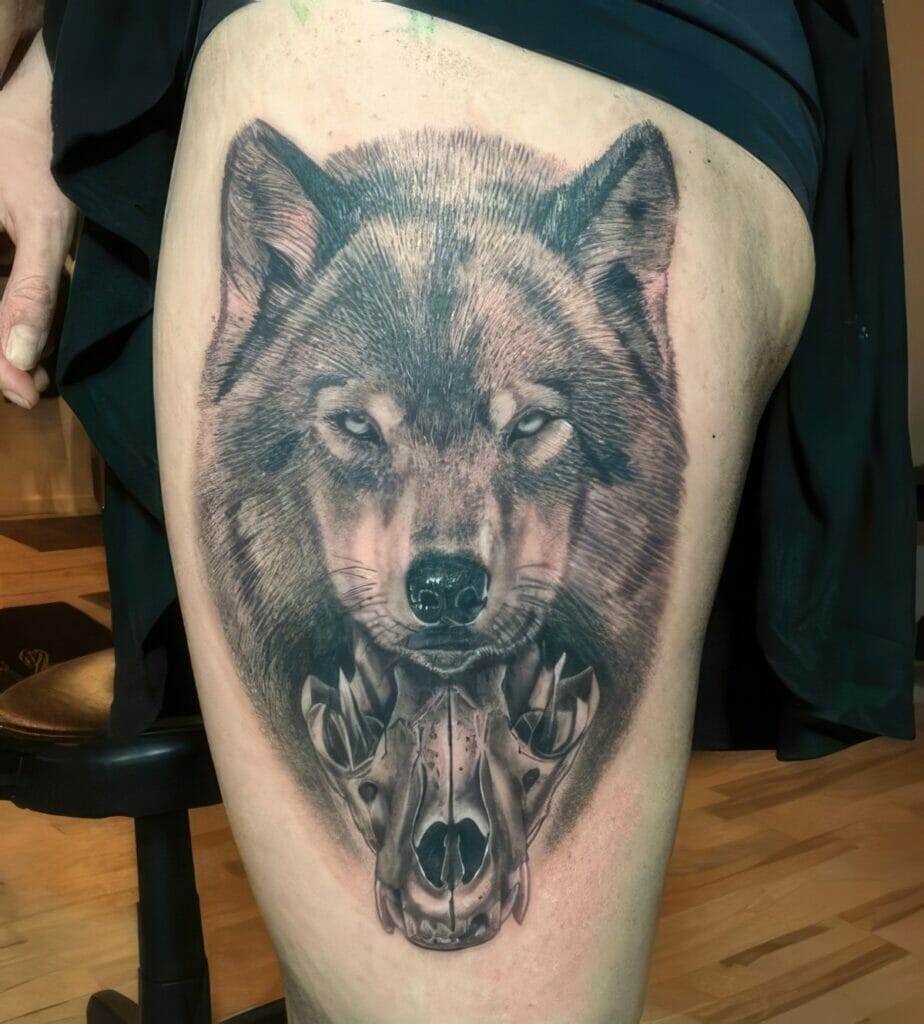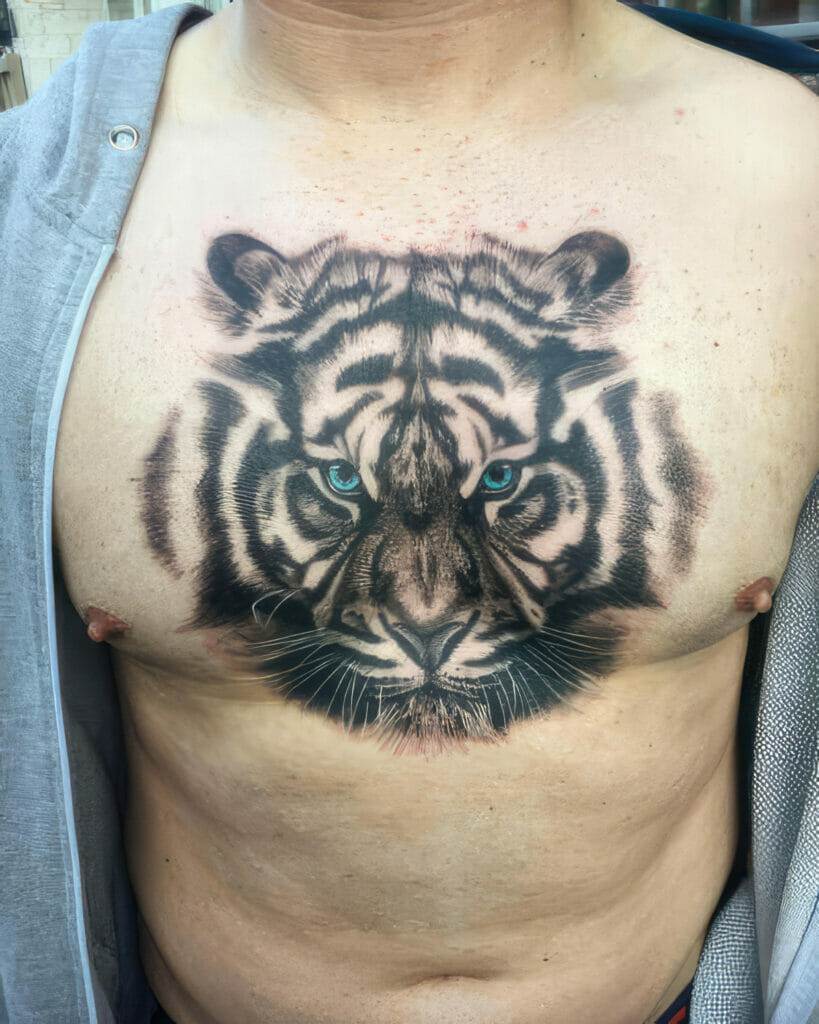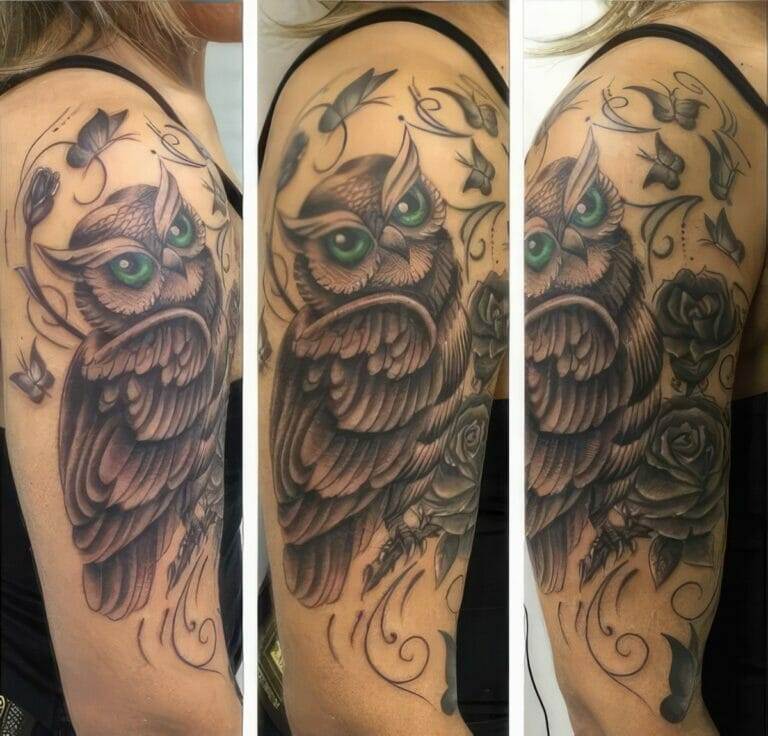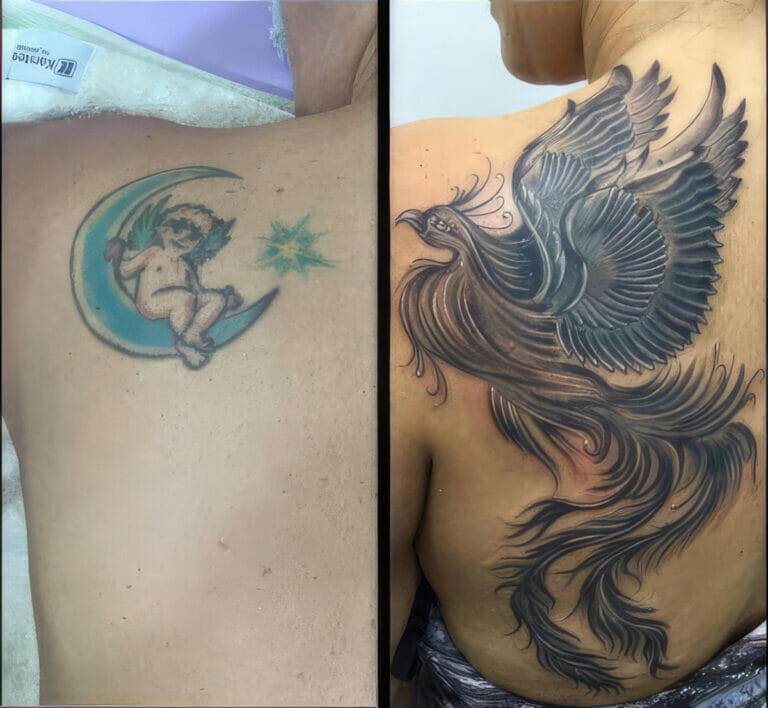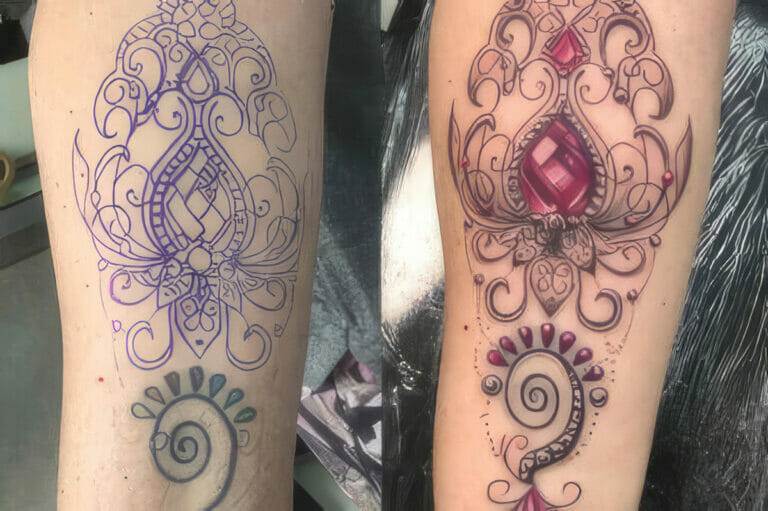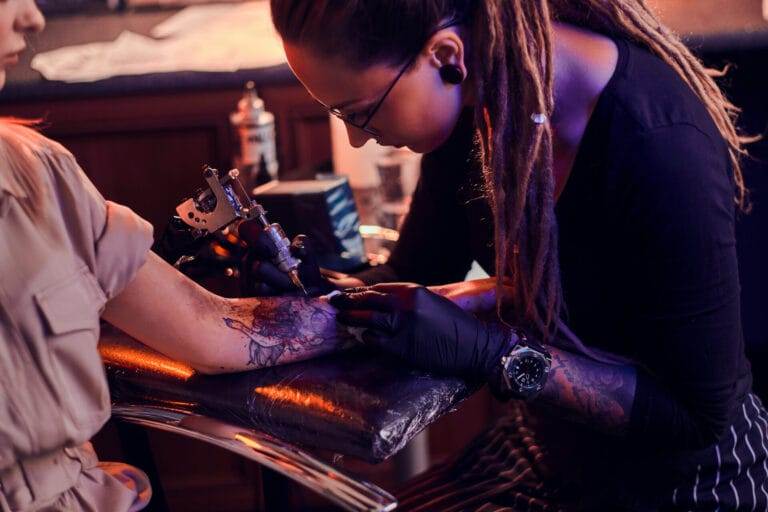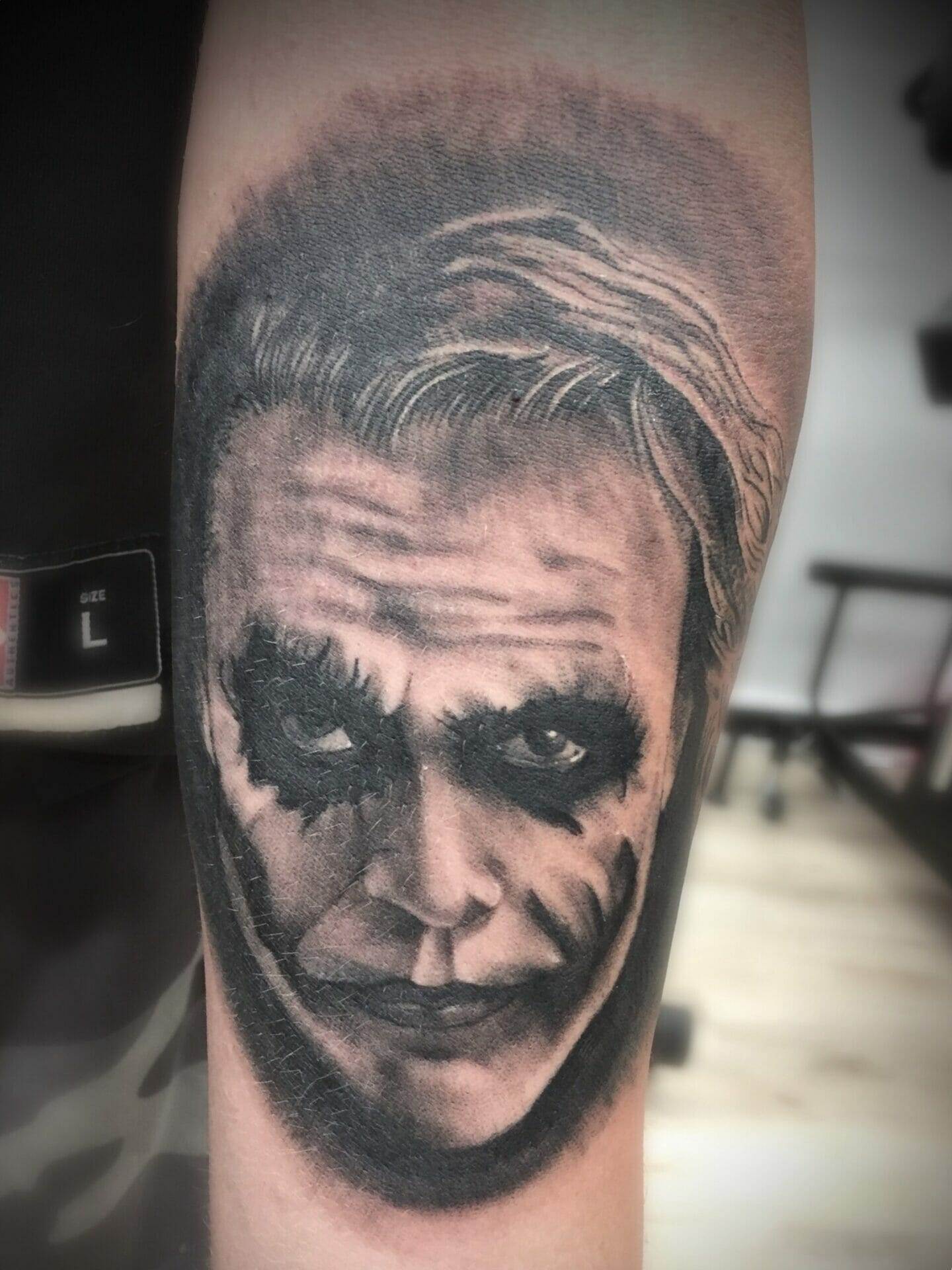
Hyper-realistic tattoos have become increasingly popular in recent years, captivating the attention of tattoo enthusiasts and art lovers alike. These tattoos are characterized by their incredible attention to detail and lifelike quality, often resembling photographs or realistic paintings. In this blog post, we will delve into the history, techniques, and significance of hyper-realistic tattoos, exploring what sets them apart from other tattoo styles and why they have gained such widespread admiration.
The Rise of Hyper-Realistic Tattoos: A Brief History
The origins of realism in tattoo art can be traced back to the early 20th century when artists began experimenting with more detailed and intricate designs. However, it wasn’t until the 1970s and 1980s that hyper-realistic tattoos started to gain traction. Artists like Guy Aitchison and Paul Booth pushed the boundaries of tattooing by incorporating elements of realism into their work.
Over time, hyper-realistic tattoos evolved as artists honed their skills and experimented with new techniques. With advancements in tattoo equipment and pigments, artists were able to achieve even greater levels of detail and realism. Today, hyper-realistic tattoos have become a sought-after style, with many talented artists specializing in this intricate form of tattoo art.
The Art of Hyper-Realistic Ink: What Makes It Different?
Hyper-realistic tattoos are characterized by their meticulous attention to detail, precision, and lifelike quality. These tattoos often feature intricate shading, highlights, and textures that create a three-dimensional effect on the skin. Unlike other tattoo styles that may rely on bold lines or vibrant colors, hyper-realistic tattoos aim to replicate the appearance of real-life subjects as closely as possible.
What sets hyper-realistic tattoos apart from other styles is the level of skill and technique required to execute them successfully. Artists must possess a deep understanding of anatomy, light and shadow, color theory, and composition. They must also have a keen eye for detail and the ability to replicate the subtle nuances of skin, hair, and other textures.
The Role of Reference Images in Creating Hyper-Realistic Tattoos
Reference images play a vital role in creating hyper-realistic tattoos. These images serve as a guide for artists, providing them with accurate details and proportions of the subject matter. Artists often use multiple reference images to ensure accuracy and capture different angles or perspectives.
There are various types of reference images used in hyper-realistic tattooing, including photographs, paintings, or even sculptures. These images help artists understand the intricate details of the subject matter, such as skin texture, hair patterns, or facial expressions.
Incorporating reference images into the design process involves careful observation and analysis. Artists study the reference images to identify key elements that need to be replicated in the tattoo. They pay close attention to details such as lighting, shadows, and color variations, ensuring that these elements are accurately represented in the final tattoo.
The Secret to Achieving Realistic Skin Tones in Ink
One of the most challenging aspects of creating hyper-realistic tattoos is achieving realistic skin tones. Skin is a complex and dynamic medium, with various undertones and shading that can be difficult to replicate with ink. However, skilled hyper-realistic tattoo artists have developed techniques to overcome this challenge.
Understanding skin undertones is crucial in achieving realistic skin tones in tattoos. Artists must consider factors such as the individual’s natural skin color, undertones (warm or cool), and any existing tattoos or scars that may affect the final result. By carefully selecting pigments and adjusting shading techniques, artists can create the illusion of depth and realism in the skin.
Successful application of skin tones in hyper-realistic tattoos requires a combination of layering, blending, and careful observation. Artists often use a combination of colors to create subtle variations and transitions in the skin. They also pay close attention to the direction of light and shadows, replicating these elements to enhance the three-dimensional effect.
The Techniques Used to Create Texture and Depth in Realism Tattoos
Texture and depth are essential elements in hyper-realistic tattoos, as they contribute to the overall lifelike quality of the tattoo. Artists use various techniques to create texture and depth, including shading, highlights, and contrast.
Shading plays a crucial role in creating texture and depth in hyper-realistic tattoos. Artists use different shading techniques, such as stippling or cross-hatching, to replicate the texture of skin, hair, or other surfaces. By carefully observing reference images and understanding how light interacts with different textures, artists can create realistic shading that enhances the three-dimensional effect.
Highlights are another technique used to create texture and depth in hyper-realistic tattoos. Artists carefully select areas of the tattoo that would naturally catch the light and apply lighter pigments or leave areas of the skin untouched. This creates the illusion of light reflecting off the surface, adding depth and dimension to the tattoo.
Contrast is also crucial in creating texture and depth. By using a combination of light and dark tones, artists can create a sense of volume and form. Contrast helps to define the contours of the subject matter, making it appear more realistic and three-dimensional.
The Importance of Proper Shading in Hyper-Realistic Tattoos

Shading is a fundamental element in hyper-realistic tattoos, as it helps to create depth, form, and texture. Proper shading requires skill, precision, and an understanding of how light interacts with different surfaces.
Achieving smooth and even shading in hyper-realistic tattoos can be challenging. Artists must have a steady hand and a keen eye for detail to ensure that the shading is consistent throughout the tattoo. They must also consider factors such as the direction of light, the texture of the subject matter, and any existing tattoos or scars that may affect the final result.
Techniques for achieving smooth shading include using a combination of needles or adjusting the voltage on the tattoo machine. Artists may also use different shading techniques, such as circular shading or whip shading, to achieve different effects. It is essential to work slowly and build up layers of shading gradually to ensure a smooth transition between light and dark areas.
Examples of successful shading in hyper-realistic tattoos can be seen in tattoos that effectively replicate the texture of skin or other surfaces. The shading should be seamless and blend seamlessly with other elements of the tattoo, such as highlights or fine details.
The Use of Negative Space in Realism Tattoo Design
Negative space refers to the empty or uninked areas in a tattoo design. In hyper-realistic tattoos, negative space is often used strategically to create contrast, enhance the three-dimensional effect, or draw attention to specific elements of the tattoo.
Negative space can be used to create the illusion of depth by leaving certain areas of the tattoo untouched. This creates a sense of light and shadow, making the subject matter appear more realistic and three-dimensional. Negative space can also be used to create contrast by juxtaposing areas of high detail with areas of minimal detail.
Successful use of negative space in hyper-realistic tattoos can be seen in designs that effectively utilize empty spaces to enhance the overall composition. The negative space should complement the subject matter and contribute to the overall aesthetic of the tattoo.
The Challenges of Creating Hyper-Realistic Tattoos on Different Body Parts
Tattooing different body parts presents unique challenges for hyper-realistic tattoo artists. Each body part has its own contours, textures, and limitations that must be considered when designing and executing a hyper-realistic tattoo.
For example, tattooing on areas with thin or delicate skin, such as the inner wrist or neck, can be more challenging due to the increased risk of bleeding or damage to the skin. Artists must adjust their techniques and equipment accordingly to ensure a successful outcome.
Tattooing on curved surfaces, such as the shoulder or calf, can also pose challenges in terms of maintaining consistent proportions and perspective. Artists must carefully consider how the design will wrap around the body and adjust their approach accordingly.
Techniques for overcoming these challenges include using different needle configurations or adjusting the angle of the tattoo machine. Artists may also need to make adjustments to the design itself to ensure that it is suitable for the specific body part.
Examples of successful hyper-realistic tattoos on various body parts can be seen in designs that effectively utilize the contours and textures of the body. The tattoo should flow seamlessly with the natural lines and curves of the body, enhancing the overall aesthetic.
The Future of Hyper-Realistic Tattoo Art: Trends and Innovations
The world of hyper-realistic tattoo art is constantly evolving, with new trends and innovations emerging regularly. As technology and equipment continue to advance, artists are finding new ways to push the boundaries of hyper-realism.
One emerging trend in hyper-realistic tattooing is the use of 3D effects. Artists are experimenting with techniques such as layering, shading, and highlighting to create the illusion of depth and dimension. This trend adds an extra level of realism to the tattoos, making them appear even more lifelike.
Advancements in technology have also had a significant impact on hyper-realistic tattoo art. New tattoo machines, pigments, and needles allow artists to achieve finer details and smoother shading. Digital tools, such as tablets and software, have also become increasingly popular among hyper-realistic tattoo artists, allowing them to create and manipulate designs more easily.
Looking ahead, the future of hyper-realistic tattoo art is likely to be characterized by even greater levels of detail, precision, and innovation. As artists continue to push the boundaries of what is possible in tattooing, we can expect to see more breathtaking hyper-realistic tattoos that blur the line between art and reality.
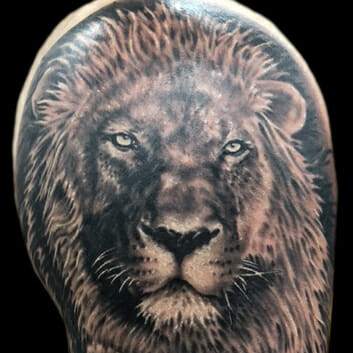
The Meaning Behind Hyper-Realistic Tattoos: Personal Expression and Storytelling
While hyper-realistic tattoos are admired for their technical skill and artistic merit, they also hold deep personal meaning for many individuals. These tattoos often serve as a form of personal expression or storytelling, allowing individuals to commemorate significant events, honor loved ones, or convey their passions and interests.
Hyper-realistic tattoos can capture the essence of a person or a moment in time with incredible detail and precision. They can evoke powerful emotions and tell a story through imagery. Whether it’s a portrait of a loved one, a depiction of a favorite place, or a representation of a personal struggle, hyper-realistic tattoos have the ability to convey complex emotions and narratives.
Examples of hyper-realistic tattoos with deep personal meaning can be seen in designs that incorporate symbolic elements or capture significant moments in a person’s life. These tattoos often serve as a reminder of personal growth, resilience, or the bonds that connect us to others.
Hyper-realistic tattoos have become a prominent and highly sought-after style in the world of tattoo art. These tattoos captivate viewers with their incredible attention to detail, lifelike quality, and ability to evoke powerful emotions. The rise of hyper-realistic tattoos can be attributed to advancements in technology, the skill and dedication of talented artists, and the deep personal meaning they hold for individuals.
In this blog post, we explored the history, techniques, and significance of hyper-realistic tattoos. We discussed the origins of realism in tattoo art and how hyper-realistic tattoos have evolved over time. We also delved into the characteristics that set hyper-realistic tattoos apart from other styles and the importance of choosing the right artist for a realism tattoo.
We explored the role of reference images in creating hyper-realistic tattoos and how artists incorporate these images into the design process. We also discussed the techniques used to achieve realistic skin tones, create texture and depth, and achieve smooth shading in hyper-realistic tattoos.
Furthermore, we examined the use of negative space in realism tattoo design, the challenges of creating hyper-realistic tattoos on different body parts, and emerging trends and innovations in hyper-realistic tattoo art. Finally, we explored the meaning behind hyper-realistic tattoos as a form of personal expression and storytelling.
Hyper-realistic tattoos continue to push the boundaries of what is possible in tattoo art, captivating viewers with their incredible detail and lifelike quality. As technology continues to advance and artists continue to innovate, we can expect to see even more breathtaking hyper-realistic tattoos that blur the line between art and reality.


